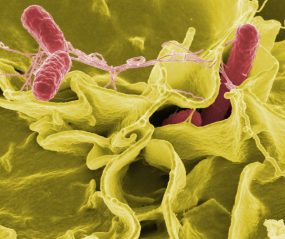Rikshospitalet Diet: A Comprehensive Guide

Rikshospitalet diet, also known as the National Hospital diet or the Oslo diet, is a popular weight loss program that originated from the Rikshospitalet University Hospital in Norway. This article will provide an in-depth overview of the Rikshospitalet diet, its different variations, popular trends, quantitative measurements, differences between the diets, and a historical analysis of their pros and cons.
1. Overview of Rikshospitalet Diet
The Rikshospitalet diet is a low-calorie eating plan that aims to promote weight loss in a short period of time. It typically follows a specific menu for three weeks, focusing on protein-rich foods, fruits, and vegetables. The diet restricts the intake of carbohydrates, sugars, and fats. It claims to help individuals lose up to 10 kilograms or 22 pounds within the three-week period.
2. Presentation of Rikshospitalet Diet

There are several variations of the Rikshospitalet diet, each with its own specific guidelines and restrictions. For instance, some versions allow for higher consumption of lean proteins, while others emphasize certain types of fruits or vegetables. These variations have gained popularity due to their claimed effectiveness and ease of implementation.
The most popular version of the Rikshospitalet diet is the three-week plan, which is divided into three phases. The first phase focuses on strict caloric restrictions and eliminating all processed foods. The second phase introduces more food variety, while the third phase aims at weight maintenance after the initial weight loss.
3. Quantitative Measurements of Rikshospitalet Diet
The Rikshospitalet diet often emphasizes the consumption of low-energy-density foods, which are foods that have a low number of calories per volume. This concept aims to help individuals feel fuller while consuming fewer calories. By incorporating specific portion sizes and calorie calculations, the diet provides a quantitative framework for individuals to track their calorie intake and monitor progress.
Additionally, some variations of the Rikshospitalet diet suggest incorporating physical activity into the weight loss journey. This allows individuals to burn additional calories, promoting further weight loss.
4. Discussion of Differences Between Rikshospitalet Diets
While all Rikshospitalet diets share the common goal of weight loss, they may differ in terms of food restrictions, calorie limits, and duration. Some versions may be more suitable for individuals with specific dietary preferences or medical conditions. It is essential to consider individual needs, preferences, and health conditions when choosing which Rikshospitalet diet to follow.
5. Historical Analysis of Pros and Cons of Rikshospitalet Diets
The Rikshospitalet diet has been subject to various debates regarding its pros and cons. Supporters argue that the diet provides a structured approach to weight loss, leading to quick results. It may also help individuals develop healthier eating habits and promote a balanced lifestyle. However, critics express concerns about potential nutrient deficiencies, sustainability, and the risk of regaining weight after the diet is completed. It is important for individuals to consider these factors before embarking on any diet plan.
In conclusion, the Rikshospitalet diet offers a structured approach to weight loss with several variations to suit individual needs. It emphasizes the consumption of low-energy-density foods and often incorporates quantitative measurements for tracking progress. However, it is crucial to consider potential pros and cons and seek professional guidance before starting any diet plan.
By providing a comprehensive overview of the Rikshospitalet diet, its various versions, quantitative measurements, differences, and historical analysis, this article aims to serve as a high-quality resource for individuals seeking information on this popular weight loss program.
FAQ
Are there any potential drawbacks to the Rikshospitalet diet?
How much weight can I lose on the Rikshospitalet diet?
What is the Rikshospitalet diet?
Fler nyheter
Salmonella provtagning: en viktig del i hälsoskydd
Rikshospitalet diet, also known as the National Hospital diet or the Oslo diet, is a popular weight loss program that originated from the Rikshospitalet University Hospital in Norway. This article will provide an in-depth overview of the Rikshospital...
05 juni 2025
Barnmorskemottagning i Malmö: Professionell och personlig mödravård
Rikshospitalet diet, also known as the National Hospital diet or the Oslo diet, is a popular weight loss program that originated from the Rikshospitalet University Hospital in Norway. This article will provide an in-depth overview of the Rikshospital...
05 juni 2025
Audionomer i Malmö: En guide till bättre hörsel
Rikshospitalet diet, also known as the National Hospital diet or the Oslo diet, is a popular weight loss program that originated from the Rikshospitalet University Hospital in Norway. This article will provide an in-depth overview of the Rikshospital...
02 juni 2025
Vad du behöver veta om foglossning
Rikshospitalet diet, also known as the National Hospital diet or the Oslo diet, is a popular weight loss program that originated from the Rikshospitalet University Hospital in Norway. This article will provide an in-depth overview of the Rikshospital...
01 juni 2025











